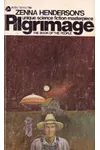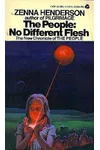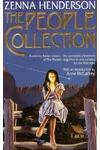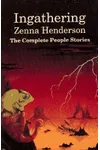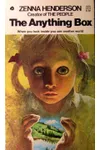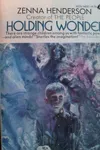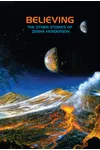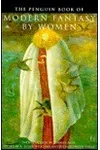Picture a storyteller who wove tales of alien refugees with hearts as human as ours—meet Zenna Henderson! Born in 1917 in Tucson, Arizona, this elementary school teacher turned science fiction author captured readers with her warm, empathetic stories. Best known for her 'People' series, Henderson’s work blends optimism and belonging, making her a quiet trailblazer in sci-fi’s golden age.
Her stories, often set in the American Southwest, resonate with a gentle hopefulness, exploring what it means to be different in a world that doesn’t always understand. Let’s dive into the life and legacy of this remarkable writer!
The Making of Zenna Henderson
Zenna Chlarson Henderson grew up in a Mormon family, the eldest of five children, with a love for sci-fi sparked by magazines like Astounding Stories at age 12. After earning a bachelor’s degree in education from Arizona State College in 1940, she taught in Tucson, at a Japanese internment camp during WWII, and even in France. These experiences shaped her ability to write authentic, compassionate characters, especially children. By the early 1950s, she began publishing in The Magazine of Fantasy & Science Fiction, adopting the spelling 'Zenna' and launching a career that balanced teaching with storytelling.
Zenna Henderson’s Unforgettable Stories
Henderson’s signature work is the 'People' series, a collection of short stories about humanoid aliens with psychic abilities like telepathy and healing, stranded on Earth after their planet’s destruction. Published between 1952 and 1980, these tales were compiled in Pilgrimage: The Book of the People (1961) and The People: No Different Flesh (1966), with all 17 stories later gathered in Ingathering: The Complete People Stories (1995). The People, who call Earth their promised land, struggle to hide their gifts while seeking community, reflecting Henderson’s themes of belonging and individuality.
Beyond the 'People,' Henderson wrote standalone stories in collections like The Anything Box (1965) and Holding Wonder (1971). Her style is warm and accessible, often narrated by teachers or children, with a pre-feminist lens that celebrates strong, nurturing women within traditional roles. Stories like 'Subcommittee' highlight feminine communication as a tool for peace, earning praise for their emotional depth. Critics like Basil Davenport called her work 'haunting,' and her optimistic tone set her apart in a genre often dominated by conflict.
Why Zenna Henderson Matters
Zenna Henderson was a pioneer, one of the first women to publish sci-fi in American magazines without a male pseudonym. Her influence reached authors like Lois McMaster Bujold and Orson Scott Card, who admired her ability to craft mature young characters. Nominated for a Hugo Award in 1959 for her novelette 'Captivity,' Henderson brought a human touch to sci-fi, emphasizing community and empathy. Her stories inspired a 1972 TV movie, The People, starring Kim Darby and William Shatner, and continue to comfort readers seeking hope in speculative fiction.
Though her books were out of print for years, the 1995 release of Ingathering revived interest, cementing her legacy as a writer who saw the extraordinary in the ordinary. Her work remains a beacon for those who feel like outsiders, proving sci-fi can be both heartfelt and profound.
About Zenna Henderson
- Born: November 1, 1917, Tucson, Arizona
- Died: May 11, 1983
- Key Works: Pilgrimage: The Book of the People, The People: No Different Flesh, Ingathering: The Complete People Stories
- Awards: Hugo Award nomination for 'Captivity' (1959)
Ready to explore a sci-fi world where kindness reigns? Snag Ingathering: The Complete People Stories and dive into Zenna Henderson’s heartwarming universe!
